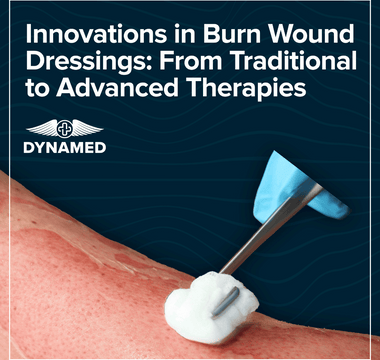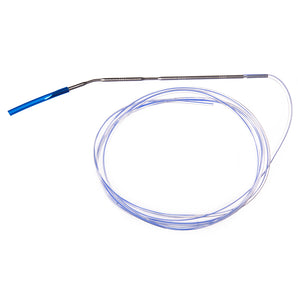Infection remains a major concern when managing both chronic and acute wounds, often slowing recovery and increasing healthcare costs. Antimicrobial dressings have become essential in modern wound care, offering targeted protection against bacteria, fungi and viruses while supporting the body’s natural healing process.
We understand how crucial it is to maintain a moist environment for optimal wound healing. By using advanced antimicrobial dressings, we help reduce the risk of infection and promote faster tissue repair. As healthcare providers across South Africa seek reliable solutions, innovative wound care technologies are shaping the future of surgical and medical treatment.
Key Takeaways
- Antimicrobial dressings are crucial in modern wound care, offering targeted protection against infection in both chronic and acute wounds.
- These advanced dressings use active agents like copper oxide and silver to combat a broad range of bacteria, fungi, and viruses while maintaining a moist environment for optimal healing.
- Clinical evidence shows antimicrobial dressings reduce infection rates, accelerate healing, and lower the frequency of dressing changes, improving both patient outcomes and care efficiency.
- Selecting the appropriate antimicrobial dressing requires careful assessment of wound type, infection risk, and exudate level, with proper application protocols necessary for effectiveness.
- While antimicrobial dressings offer measurable advantages over traditional options, considerations such as cost, potential resistance, and patient sensitivity must be addressed for safe and effective use in clinical settings.
Understanding Wound Infections
Wound infections remain a leading complication in both chronic and acute injuries, affecting healing speed and quality. We focus on wound care by minimising infection risk early with antimicrobial dressings and advanced wound care products.
Causes and Risks in Chronic and Acute Wounds
Infection in wounds typically starts when harmful microorganisms, such as bacteria and fungi, enter the injury site. Contamination is especially common in chronic wounds—examples include diabetic ulcers—or acute wounds, such as surgical sites or burns. The risks increase with poor circulation, compromised immune response, or insufficient wound care.
Some key risk factors:
- Chronic illnesses (diabetes, vascular disease)
- Repetitive trauma or pressure (bed sores, pressure ulcers)
- High bacterial load from inadequate wound hygiene
- Delayed wound closure or high moisture loss
Our medical devices and Antimicrobial Wound Dressings actively target these infection risks, especially in environments where healthcare resources face demand spikes.
Impact on Healing and Patient Outcomes
Untreated wound infections can delay tissue repair, extend recovery periods, and dramatically increase care costs. Infected sites often exhibit inflammation, odour, and excess exudate, all of which compromise healing. Persistent infection in chronic wounds can result in non-healing ulcers, leading to further complications like cellulitis or, in advanced cases, amputation.
Quick action with effective wound care products, including antimicrobial dressings, supports optimal patient outcomes. Significant reductions in infection rates, fewer dressing changes, and improved patient comfort have been observed in healthcare facilities using advanced wound care strategies. Reports indicate enhanced healing rates and lower re-infection statistics—essential for any facility aiming to improve recovery and manage resources efficiently.
By maintaining a clean, moist environment with advanced dressings, we enhance natural repair and support better clinical results across all patient groups. Whether treating burns, ulcers, or surgical wounds, our evidence-based approach delivers measurable benefits to both providers and patients.
What Are Antimicrobial Dressings?
Antimicrobial dressings are specialised wound care products designed to manage infection risk in chronic and acute wounds. These medical devices deliver targeted antimicrobial protection, creating optimal healing conditions, especially in environments where basic and advanced wound care is critical.
Key Components and Mechanisms of Action
Antimicrobial dressings combine multiple layers to support healing and infection control. We design them using sterile, non-adherent outer materials to prevent sticking and manage exudate effectively. An internal absorbent layer collects wound fluid, keeping the wound moist while reducing the risk of maceration.
Copper oxide and other active antimicrobial agents on the external layers act against bacteria, fungi, and viruses, disrupting their cell walls and breaking down biofilms. By maintaining a controlled, moist environment, antimicrobial dressings not only support new tissue growth but also help prevent further contamination.
Healthcare facilities often choose these advanced wound care products for wounds needing ongoing protection, such as pressure ulcers, diabetic foot ulcers, burns, and surgical incisions. And when integrated with existing wound care protocols, antimicrobial dressings promote faster tissue repair and minimise infection-related setbacks.
Types of Antimicrobial Agents Used
Antimicrobial dressings use a variety of active agents, each offering unique antimicrobial properties:
- Copper ions: Provide broad-spectrum activity against bacteria, fungi, and viruses, as seen in many trusted Antimicrobial Wound Dressings.
- Silver compounds: Common in wound care products, silver disrupts pathogen cell structure and limits resistance development.
- Honey-based agents: Used in medical devices for their antimicrobial and pH-balancing effects.
- Iodine complexes: Deliver sustained antimicrobial action, particularly valuable in chronic wound environments.
When healthcare providers across Africa need wound care solutions that balance infection control with gentle tissue support, antimicrobial dressings present a versatile option, meeting the diverse needs within the advanced wound care sector.
Effectiveness of Antimicrobial Dressings
Antimicrobial dressings strengthen wound care by directly addressing infection risk in both chronic and acute wounds. These advanced wound care products target bacteria, fungi and viruses—helping healthcare teams reduce complications during treatment.
Evidence in Chronic Wound Management
Clinical studies highlight antimicrobial dressings as key in chronic wound management, particularly for diabetic ulcers and pressure sores. Researchers report lower infection rates and faster closure in cases using copper oxide and other antimicrobial wound dressings compared with standard dressings. For example, wound care products with sustained copper ion release reduce microbial counts on chronic wounds by over 90% within 48 hours according to in vitro data. Besides antimicrobial action, these dressings promote collagen formation and maintain moist environments for quicker tissue repair and greater patient comfort. Facilities introducing these medical devices have seen fewer dressing changes and reduced recurrence, especially in high-risk patients.
Role in Acute Wound Infection Prevention
Antimicrobial dressings give acute wounds, like surgical sites or burns, notable protection against early infection. Clinical trials demonstrate that advanced wound care dressings coated with antimicrobial agents—such as copper oxide or silver—lower post-surgical infection rates by up to 40% compared with non-antimicrobial options. These dressings also limit exudate accumulation and improve healing times for acute injuries. Hospitals and clinics adopting these wound care products report better patient outcomes and shorter stays, supported by routine surveillance data in South Africa and global guidelines on advanced wound care. By integrating suitable antimicrobial dressings, healthcare providers in Africa can enhance infection control standards across facilities.
Antimicrobial Dressings: Effectiveness Data
|
Dressings Type |
Pathogens Targeted |
Infection Rate Reduction |
Healing Acceleration |
Setting |
|
Copper-oxide based |
Bacteria, fungi, viruses |
Up to 90% |
Increases collagen, elastin |
Chronic wounds |
|
Silver-impregnated |
Broad-spectrum microbes |
Up to 40% |
Enhances epithelial repair |
Acute wounds |
These measurable benefits show why we trust antimicrobial dressings as essential elements in modern wound care protocols, both in chronic and acute clinical scenarios.
Practical Considerations for Clinical Use
Integrating antimicrobial dressings into wound care protocols requires careful planning and consistent execution. Clinical teams across Africa depend on established criteria and precise techniques to achieve optimal results with advanced wound care solutions.
Selection Criteria for Different Wound Types
Selecting the right antimicrobial wound dressing depends on several factors unique to each case. Consider the type of wound—chronic or acute—the level of exudate, and infection risk when making a choice. For example, diabetic ulcers and pressure sores need dressings with broad-spectrum activity, such as those containing copper oxide or silver compounds, to tackle a high bacterial load. Burns and post-surgical wounds often respond best to dressings with non-adherent layers, which help maintain a moist environment without sticking to regenerating tissue.
We recommend assessing the wound’s depth, location, and duration before deciding. Some wounds—like partial-thickness abrasions—benefit from thin, flexible antimicrobial dressings, while deeper, draining wounds may need multi-layer products for enhanced fluid management. By tailoring the dressing choice to each wound’s clinical presentation, healthcare providers can maximise healing outcomes and minimise infection risk.
Application Techniques and Protocols
Applying antimicrobial dressings correctly is vital for advanced wound care effectiveness. Begin by cleansing the wound thoroughly, following established infection control protocols. Dry the surrounding skin and remove any necrotic tissue before applying the dressing to ensure full contact with the wound bed and optimal antimicrobial coverage.
Position the antimicrobial dressing so the absorbent layer manages exudate, and ensure the antimicrobial agent—like copper oxide—covers the wound site. Secure the product using a suitable secondary dressing or bandage, avoiding excessive pressure that could restrict blood flow. Change the dressing at intervals specified by the wound care protocol or manufacturer’s guidelines, which often range from daily changes for highly exuding wounds to up to several days for less complex cases.
Effective application reduces dressing changes and discomfort, making the advanced wound care process smoother for both clinicians and patients. If infection signs persist or worsen, clinical staff might need to revisit their dressing choice or application method to safeguard patient outcomes.
By standardising wound care practices with evidence-based application techniques, healthcare providers across Africa improve healing rates and boost confidence in antimicrobial dressings and medical solutions.
Benefits and Potential Limitations
Antimicrobial dressings play a major role in both basic and advanced wound care, supporting healthcare providers through innovation and practical results. Their use in clinical settings highlights real advantages but also brings identifiable limitations which matter in everyday wound management.
Advantages Over Traditional Dressings
-
Broader Antimicrobial Protection
Antimicrobial wound dressings like copper oxide types provide wide-spectrum coverage against bacteria, fungi, and viruses. For example, these dressings actively reduce infection risk in burns, surgical wounds, and diabetic ulcers, which supports faster recovery.
-
Supports Advanced Wound Healing
Advanced wound care products promote tissue repair with optimal moisture control, helping collagen and elastin synthesis. This approach helps shorten healing time in common chronic wounds.
-
Reduced Frequency of Dressing Changes
These medical devices maintain a moist environment for longer periods, making them more convenient than standard gauze. Fewer dressing changes save time and lower costs for clinics.
-
Pain and Trauma Reduction for Patients
Antimicrobial dressings typically feature non-adherent surfaces, so wound care becomes less painful and traumatic during removal, especially for sensitive wounds.
-
Measurable Clinical Outcomes
Data show that hospitals using advanced antimicrobial dressings see lower re-infection rates and shorter patient stays in wound care units compared to traditional methods.
Table: Benefits of Antimicrobial Dressings vs Traditional Dressings
|
Feature |
Antimicrobial Dressings |
Traditional Dressings |
|
Infection Risk |
Low |
Higher |
|
Healing Time |
Shorter |
Longer |
|
Frequency of Changes |
Less Frequent |
More Frequent |
|
Coverage (Bacteria/Fungi/Viruses) |
Broad |
Limited |
|
Pain During Removal |
Lower |
Higher |
|
Cost Savings (Long Term) |
Notable |
Lower |
Challenges and Concerns in Clinical Practice
-
Cost and Accessibility
Advanced wound care products can carry higher upfront costs compared to basic dressings. For facilities with budget constraints, especially in some African regions, this cost factor may affect product choice.
-
Potential for Antimicrobial Resistance
Repeated or prolonged use of certain types of antimicrobial agents might foster local resistance among some bacteria. Clinical teams must monitor usage and rotate products as needed.
-
Skin Sensitivity or Allergic Reactions
Some patients react adversely to components in antimicrobial dressings, such as silver or iodine. Observing patient response is key in selecting medical devices for wound care.
-
Specialised Training and Protocols
Advanced dressing application needs trained healthcare staff. Incorrect use reduces benefits or risks compromising healing outcomes.
-
Limited Evidence for All Wound Types
Not every wound sees equal benefit from antimicrobial dressings. Clinical guidelines demand wound assessment before choosing advanced options.
-
Regulatory and Quality Assurance
Only approved and regulated antimicrobial wound dressings, like those meeting South African medical device standards, should feature in routine protocols to ensure patient safety and treatment consistency.
Antimicrobial dressings transform wound care practice when integrated with proper protocols and staff training. Their targeted benefits and modern material designs address key infection challenges in both chronic and acute wounds, advancing health outcomes across clinics and hospitals in Africa.
Conclusion
Antimicrobial dressings represent a vital advancement in wound care, helping us address infection risks more effectively across a range of wound types. As healthcare providers continue to seek innovative solutions, these dressings offer a practical way to improve healing and reduce complications.
By embracing new technologies and best practices, we can deliver better outcomes for our patients and ensure that wound management in Africa keeps pace with global standards. Let's continue to prioritise infection control and invest in solutions that make a measurable difference in patient care.
Next Read:
Want to explore which antimicrobial dressings deliver the best results across wound types?
Read our breakdown of top-performing products, including silver and copper-based options, in this follow-up guide: 👉 Best Antimicrobial Dressings for Wound Healing
Visit Dynamed Pharmaceuticals
Phone: 0861 00 00 43
Website: dynamed.co.za
Email (Sales): sales@dynamed.co.za
Email (Info): info@dynamed.co.za
Google Maps: Find us here
Frequently Asked Questions
What are antimicrobial dressings?
Antimicrobial dressings are specialised wound care products designed to prevent and manage infection in both chronic and acute wounds. They contain active agents like silver, copper oxide, honey, or iodine, which target bacteria, fungi, and viruses, supporting faster and safer healing.
How do antimicrobial dressings work?
These dressings combine multiple layers to maintain a moist environment and prevent wound maceration. The antimicrobial agents within them actively kill or inhibit the growth of harmful microorganisms, reducing the risk of infection and promoting tissue repair.
For which types of wounds are antimicrobial dressings suitable?
Antimicrobial dressings are suitable for both chronic wounds, such as diabetic ulcers and pressure sores, and acute wounds, including burns, surgical sites, and traumatic injuries. They are chosen based on wound type, infection risk, and exudate level.
What are the benefits of using antimicrobial dressings over traditional dressings?
Antimicrobial dressings offer broader protection against pathogens, support optimal moisture for healing, reduce dressing change frequency, minimise pain during removal, and have been shown to lower infection rates and speed up recovery.
Are there any risks or limitations associated with antimicrobial dressings?
Potential limitations include higher costs, possible skin sensitivity, and the risk of antimicrobial resistance with prolonged use. Proper training and appropriate dressing selection are essential to avoid complications and ensure best outcomes.
How effective are antimicrobial dressings in reducing infection rates?
Clinical studies indicate that antimicrobial dressings can reduce post-surgical infection rates by up to 40% and significantly lower re-infection rates in chronic wounds. Hospitals using these dressings consistently report better healing outcomes and shorter patient stays.
How should antimicrobial dressings be applied?
Apply to a clean wound following recommended protocols: cleanse the wound, position the dressing to cover the affected area, and secure it with suitable fixation. Follow clinical guidelines for dressing change frequency to ensure optimal results.
Can antimicrobial dressings be used for all patients?
Most patients can benefit from antimicrobial dressings, but they may not be suitable for those with specific allergies or sensitivities to the ingredients. Always assess individual patient needs and consult a healthcare professional before use.
What factors should be considered when selecting an antimicrobial dressing?
Consider the wound’s type, size, infection risk, level of exudate, and patient sensitivity to dressing materials or antimicrobial agents. Selection should be tailored to ensure effective infection control and optimal healing.
Are antimicrobial dressings widely available in South Africa?
Yes, there is growing demand and availability of advanced antimicrobial dressings in South Africa, supported by innovative technologies and healthcare providers committed to improved wound management practices.






